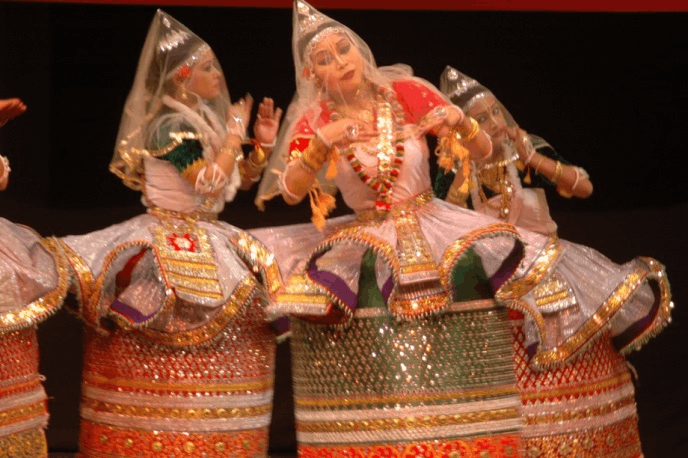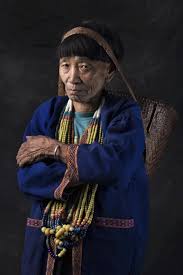
Manipur, particularly the valley area, has a long record of history governed by several Meitei monarchs. Based on the Chronicles of the King, the only available prehistoric record, it is known that initially the Imphal valley was inhabited by seven clans/tribes with specific chiefs.

It was during the reign of a chief called Pakhangba that the monarchical state got established. Pakhangba, a powerful chief of the Ningthouja clan (also called Meitei clan), overpowered all the other six clans and assimilated them under his jurisdiction. This historic event led to the emergence of the history of Meilei ethnic groups and the beginning of Manipur monarchy in the valley recorded to be in 33 Be (Sanajoaba, 2003). Since then, the Meitei society emerged as a distinct social group, distinct culturo political entity anchored and sustained by the feudal monarchy. Over a period of history, this political unit emerged as a powerful kingdom which was able to have great political influence over the geopolitical context of the region and reigned over a long period of history. They entrenched themselves strongly as monarchs of the land with Kanglallmphal as their power center upto the time of the merger of Manipur as princely state into the Union of India on the twenty-first September of 1949. The remains of this historic fortress stand even today at Kangla giving a narrative to this great history.
In ancient times the Meiteis, the local inhabiting ethnic group of the plain area called their land by various nomenclature such as ‘Kangleipak’, ‘Poireipak’ and ‘meitrapak'(Kahui, 1991: 1). Based on this record, the historians opined that the land of the valley area could have emerged as an integral part of the ecological system of Loktak Lake. The term ‘Kangleipak’, meaning Kang=dry, leipak=land, suggests that this land has over period of time emerged from the water submerged land around the Loktak lake. This lake even today stands as a landmark of this dried land called Kangleipak in the present state ofManipur. Besides, the records of British administrators also mention that the princely state of Manipur was considered to be located within the low lying land areas, valley area, a 700 sq miles stretch of fertile agriculture land, with its epicentre at Kangla, now called Imphal, the Capital of the state. According to the records, this valley is surrounded approximately by a 8000 sq miles stretch of Hills forming a perfect fortified political space where the Manipur Monarchs established their power and domain.
However, the royal historical narratives, as recorded in the Chronicles, endow a far reaching territorial control of the Kings far into the hill regions surrounding the valley. This territorial claim of the king extended upto the whole of the Kaboo valley (Sanajaoba, 2003: 13 and Gangmurnei, 1991: 194). However, the Manipur Monarchs territorial claim especially in the eastern side was a contentious political issue. It gave rise to several political confrontations between Burmese (Ava) King and Manipuri King. Nevertheless, it is historical evidence that the Kings of Manipur were one of the most significant local feudal Kings who played crucial political games that defined the politics of this state and the region. They were in an active political relationship with the other major local political feudal kings of Assam, Tripura, Silchar and other chieftains of the hill region. The Cheitharol, the chronicles of the king, gives a vivid and systematic account of the historical encounters of these Kings. According to the chronicles, the Monarchs endowed with power and authority had’ always asserted their authority over the various autonomous tribal chiefs of the surrounding hill areas and the adjoining regions of Tripura, Cachar and even Burma. However, the political relationship between the hill autonomous tribes and king was marked by co-existence. The monarchs of the valley depended on the hill tribes for defence and the tribes of the hill areas also found a mutual protection in the monarchs. The historical narratives of many tribes in the h ill region indicate that a few of the chiefs of small and weak tribes got subdued. Some of them sought the monarchical refuge and protection. Most of these tribes submitted to the sovereignty of the king and had to pay tribute as a mark of the allegiance. There are also narratives of resistance of especially from the more powerful tribes and chiefs who were able to put up a strong and independent political alternative. However, in both of the cases, the autonomous political structures of the tribes remained unaltered. Therefore, in many ways, the political relationship between the King and the tribal chiefs confined basically within occasional raids and punitive expeditioris between the Kings and chiefs. As mentioned in the Meitei chronicles, one of the first raids on the tribal chiefs is that of Maring in 1302AD (Iboogohal and Khelchandra, 1967: 7 as cited by Ranjit in Sanajaoba, 1988: 86).
Based on the understanding drawn from the existing archaeological and historical evidences, both written and oral, the people of Manipur are broadly grouped under one racial, ethnic stock. A.R. Grierson classified them under a Tibeto-Burman linguistic group. However, this stock, as seen in the present reality, over a period of history endured the ‘stresses and stretches’ of time and place, and has given way to social bifurcation and permutation. These permutations over long period of a history have generated varied distinct tribes, ethnic groups and villages. In such situation, management of the politics of change through a rigorous ethno-historical repositioning is critical to protection, preservation and promotion of their ethnic group.
The people’s narratives which are expressed in the form of folklore, myths and legends, songs and dances, indigenous rituals, cultural attires, indigenous games, arts and artefacts, handlooms and handicrafts are vital part of their daily life. The ethnic origin and settlement is mainly inferred from lived culture, language, customary laws and practices, chieftaincy and self governance system. As a practice, language feature is a predominant factor for self identification, ascription and classification. As regards ethnic origin of Meiteis, it is commonly believed that people of the valley had lived here as specific cultural group since 33AD. They also fall within the linguistic group of ‘Kuki-Chin-Mizo’, a sub group of the Tibeto Burman race. In the later periods of the history, the Muslim (Panghans) and Bishnipriyas have emerged as societies residing in the valley area. As recorded in the Cheitharols, the plain people of Manipur are more commonly identified with seven clans.
The ethnonym, Meitei, historically refers to the Ningthouja clan-dynasty founded by Nanga Leiren Pakhangba. He was the chief of the Meitei clan and through his power the whole ethnic group of these seven clans got absorbed into the Meitei clan. There are also legends of the tribes, particularly the Thangkhuls and other Naga narratives that suggest the origin of the Meiteis from the hills (Hudson, 1911). However, the Meitei society underwent a major transformation with the conversion of Meitei Kings into Vaishanvism. The first king who got converted was Charairongba in April 1704. On his conversion, Charairongba adopted a Hindu name Pritambar Singh (Kabui, 1991: 237). However, the Brahmanization of Meitei King began with the eldest son of Charairongba, Gareeb Niwaz (also called Kayaamba). The Brahmanization process was initiated with the ordination of the Gareeb Niwaz as the descendent of Arjun, the third of the Pandava brothers of Mahabharata. Gareeb Niwaz declared Hinduism the state religion. 23 The hill areas are associated with people with various cultures having independent village political units of chiefs. They are usually referred as tribes (a colonial construct). The origin narratives of such tribes give emphasis to their indigenous nature, connectedness to land and culture. As a case in reference, historians such as Gangmumei assumes that Naga tribes (collectively referring to tribes inhabiting the hill ranges of northern, eastern and western Manipur) settled in the present habitat during the early centuries of the Christian era or even centuries before Christ (Kabui, 1991: 23). However, these conclusions have been drawn mainly based on narratives and stories of the oral history of the people. Nevertheless, the regional historical studies, also applicable to Manipur state in specific, suggest that the various ethnic gwups inhabiting this region are part of the great Mongolian family commonly believed to be originally residing in Western part of China. Historians commonly construct the origin of the people of the north east region as expressed; “Different branches of the great SinoTibetan speaking people from the Yang Tse-Kiang and Hwang-Ho River areas were pushed down south and were probably 200BC onwards and some ofthese tribal’ groups infiltrated into India mostly along the western part of Brahmaputra” (Nag, 1998: 35). It has been also assumed that the people might have moved in three waves: Tibeto-Burman, Mongkhmer and Siamese Chinese (as cited in Gangte, 2005). Therefore, indigenous natu re of the people in this area cannot be understood as an aucthothones. However, in the recent context these cultural groups have come under several external political and socio-economic pressures. This situation has precipitated an environment for people’s construction of their history, culture and identity as a political mobilization process.
The ancient kingdom now called Manipur has been the home of several ethnic communities. The most dominant amoog them is the Meiteis, who have been inhabiting the central valley from time immemorial till date. Though they dwell only in the valley which covers about one-tenths of the area of Manipur, the Meiteis constitute about two-thirds of the total population of the state. Outside the state also, a sizeable number of Meiteis settled in some parts of Burma, Bangladesh and in Cachar and in some districts of Assam.
www.tribaltoursinindia.com © All Rights Reserved, 2021